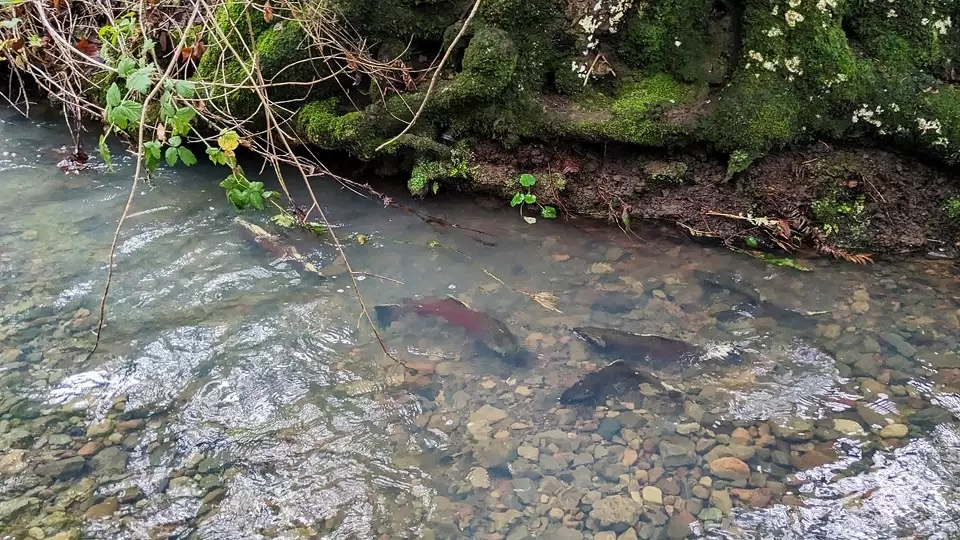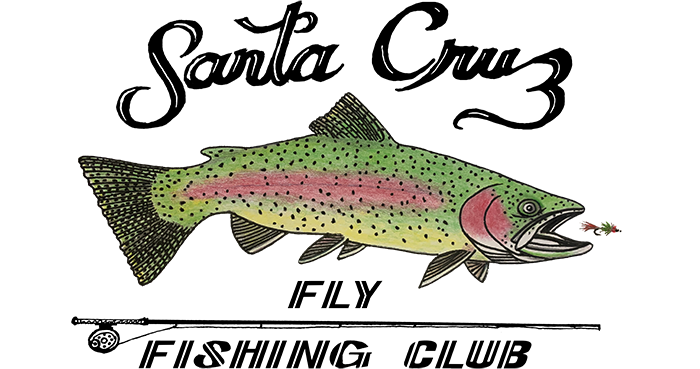
The Good News from Marin County
In Marin County creeks, Central California federally endangered coho salmon return numbers were non-existent last year. This year, however is a different story. On Olema Creek near Point Reyes, 70 redds were found. On one day last December, 150 adult coho were counted, which makes this year the best in over 15 years. Fishery biologists say one of the significant reasons is the work done to improve the habitat in the streams. The monitoring team also sighted coho this year in Pine Gulch Creek and Cheda Creek which until 2020 had no fish counted in over a decade. Redwood Creek in Muir Woods has also seen an increase in redd counts, after habitat enhancement and a release of 4,000 hatchery-reared fish. In the 1940s the California coho salmon population was estimated to to be from 200,000-500,000 fish. Today, about 1% remain (2,000-5,000). For more information, see the source of this article: https://www.sfgate.com/bayarea/article/endangered-coho-salmon-bay-area-comeback-18682993.php
The Not So Good News From Yellowstone Park
In a really interesting and sobering article that came by way of Hatch Magazine titled “Have we taken our love for native trout too far?”, the author looks at the history of fishery management in Yellowstone Park as far back as 1888—before it became a National Park. At that time, native westslope cutthroat trout and Arctic grayling thrived from both the Gibbon and Firehole, down through the Madison and beyond. Apparently that wasn’t enough fish for the man in charge from the U.S. Army. He was quoted as saying “I hope to see all of these waters so stocked that the pleasure-seeker in the Park can enjoy fine fishing within a few rods of any hotel or camp.” By 1935, the grayling had completely disappeared from the park, due to the introduction on non-native brown trout and brook trout. Rainbow trout were also planted. These fish all out-compete the grayling and westslope cutthroat. The brookie has apparently been the most harmful. The article expands with other examples throughout the west of human intervention with harmful effects on native fish populations. There are some ongoing efforts to restore native fish and control the non-natives in small areas. But for the most part, that is all that can be realistically accomplished. The other problem is the changing climate resulting in more hot weather and droughts (resulting in stream temperatures too warm to support healthy trout), and flooding. The warmer water trend is causing largemouth and smallmouth bass to move further up into reaches that were once void of these fish. At this point, It appears that our expectations will be that in many of these streams we should try to manage the reliable flow of cool water to support any wild trout. To sum up, I find this quote from the author of this article spot on: “Truth be told, we couldn’t have fouled up Western trout fisheries more effectively had we actually sought to do it. Our ignorance and our arrogance 140 years ago, coupled with our disdain for the natural function of rivers led us to this point.”
Posted on March 1st, 2024
